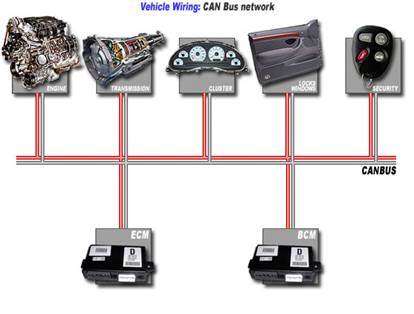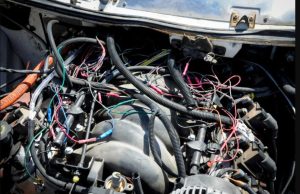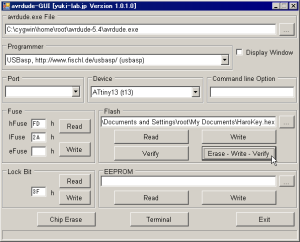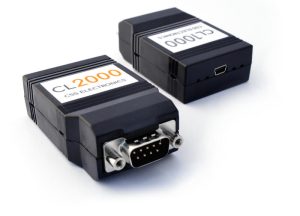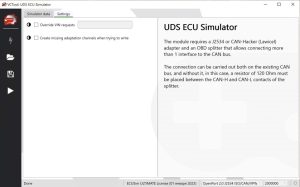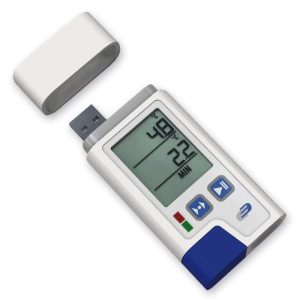If you’ve ever driven a modern car, then you’ve already interacted with a CAN bus. But what is a CAN bus, and why is it such a big deal?
CAN, or Controller Area Network, is a communication protocol that was developed in the 1980s by the German company Bosch. It’s used to connect various electronic components within a vehicle, such as the engine control unit, transmission, airbags, and entertainment system, to name a few.
Before CAN was developed, each component within a car had its own wiring harness and communication system, which made the vehicle’s electrical system complex and difficult to manage. However, with the introduction of CAN, all these components can communicate with each other on a single network, significantly reducing the number of wires required and making the system more reliable.
CAN uses a twisted-pair of wires to transmit data between components, with the ability to transfer data at speeds of up to 1 Mbps. This speed allows components to communicate with each other in real-time, making it ideal for safety-critical systems such as airbags or antilock braking systems (ABS).
One of the biggest advantages of CAN is its ability to handle multiple tasks simultaneously. Each component on the network can send and receive data, allowing for efficient communication between all components. Additionally, if a component fails, the CAN system will automatically isolate the problem and continue to operate normally, preventing the entire system from shutting down.
As the number of electronic components in modern vehicles continues to increase, the importance of CAN becomes even more apparent. By using a single network to connect all components, manufacturers can reduce the overall weight of the vehicle and improve fuel efficiency, all while increasing the reliability and safety of the vehicle.
In conclusion, CAN is a vital part of modern vehicle technology. Without it, the complex systems that power our cars would be much more difficult to manage and maintain. With its ability to handle multiple tasks simultaneously, communicate in real-time, and isolate component failures, CAN has become the standard for automotive communication protocols.
Advantages
CAN (Controller Area Network) is a communication protocol that has become an integral part of modern vehicle technology. Here are some of the advantages of using CAN:
- Efficient Communication: One of the biggest advantages of CAN is its ability to handle multiple tasks simultaneously. Each component on the network can send and receive data, allowing for efficient communication between all components. This efficient communication ensures that all the components in the vehicle are working together in real-time, enhancing the overall performance of the vehicle.
- Reduced Wiring: Before the introduction of CAN, each component in a car had its own wiring harness and communication system. This made the vehicle’s electrical system complex and difficult to manage. However, with the introduction of CAN, all the components can communicate with each other on a single network, significantly reducing the number of wires required and making the system more reliable.
- Real-time Communication: CAN allows for real-time communication between components in the vehicle. This is particularly important for safety-critical systems such as airbags or antilock braking systems (ABS). Real-time communication ensures that these systems can work together seamlessly, enhancing the overall safety of the vehicle.
- Fault-tolerant: CAN is designed to be fault-tolerant. If a component fails, the CAN system will automatically isolate the problem and continue to operate normally, preventing the entire system from shutting down. This enhances the reliability of the vehicle and reduces the likelihood of a catastrophic failure.
- Scalability: CAN is scalable, which means that it can be used in a wide range of applications. It is not limited to just automotive applications but can be used in other industries such as aerospace, industrial automation, and medical equipment.
- Cost-effective: The use of CAN reduces the overall weight of the vehicle and improves fuel efficiency, making it cost-effective. The reduction in wiring and the ability to use smaller and lighter components reduces the overall cost of the vehicle.
In conclusion, CAN is a highly efficient communication protocol that has revolutionized the way modern vehicles operate. Its ability to handle multiple tasks simultaneously, reduce wiring, and provide real-time communication between components has made it an essential part of modern vehicle technology. The fault-tolerant and scalable nature of CAN, along with its cost-effectiveness, make it a preferred choice for many industries.
Disadvantages
While CAN (Controller Area Network) has many advantages, there are also some potential disadvantages to consider. Here are some of the drawbacks of using CAN:
- Limited Bandwidth: CAN is designed to transfer small amounts of data quickly, which means that it has limited bandwidth. This can be a disadvantage when large amounts of data need to be transferred between components in the vehicle. However, newer versions of CAN, such as CAN FD, have been developed to address this limitation.
- Limited Range: CAN is designed for use within a single vehicle, and its range is limited to a few meters. This can be a disadvantage in situations where data needs to be transmitted over longer distances.
- Complex Integration: While CAN is designed to reduce the complexity of the vehicle’s electrical system, it can be challenging to integrate new components into an existing CAN network. Integration can require specialized expertise and may be time-consuming.
- Security: Since CAN is an open protocol, it is susceptible to security vulnerabilities. Hackers can potentially access and manipulate the network, which could lead to safety issues or data breaches.
- Compatibility: While CAN is a widely used protocol, there are many variations and versions, which can create compatibility issues between different systems. This can make it challenging to integrate components from different manufacturers.
In conclusion, while CAN has many advantages, there are also potential disadvantages to consider. Its limited bandwidth and range, complex integration, security vulnerabilities, and compatibility issues may pose challenges in some situations. However, these drawbacks can be addressed by newer versions of CAN and proper network design and security measures.

